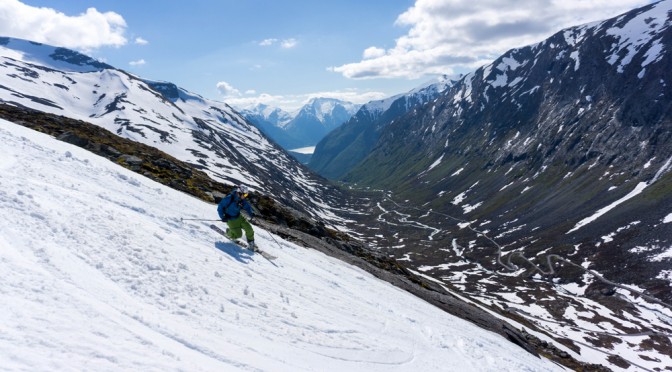Every year the same thing happens in the springtime. The temperature warms up and the snow starts to melt. Most people start thinking of their summer holidays and skiing is forgotten for a few months.
Some professional skiers or ski enthusiasts start to head off to the southern hemisphere ski fields of Australia, New Zealand and South America and whilst they don’t offer the same level of facilities and size of the major European resorts, they generally get good snow conditions throughout their winter months of June, July, August and September.
If travelling half way around the world for a ski holiday isn’t your thing, then the chance to ski in the summer in Europe can offer an easier alternative. Glaciers in some of the higher resorts open up normally between June and September, but there are some important factors to take into consideration.
The fact is that glaciers have been retreating in Europe now for several years and this can impact environmentally on the local eco-systems. It’s important to check out the rules and regulations governing where to ski on the glacier and keep within the area boundaries. Glaciers often have large crevasses which can be visible and sometimes hidden. Going off piste on a glacier can be extremely dangerous so always stay within the marked runs.
In general, the weather will be warmer and sunnier than in the winter months although in the high mountains it can change quickly and it’s important to be prepared for any type of weather, even snow. So take a backpack with various items of clothing for all weathers. Because the climate is usually warmer, the slopes tend to be hard first thing in the morning and very soft (or slushy) in the afternoon. It’s advisable to start skiing early and finish early, certainly no later than 2pm when the snow can be very wet and soft.
Plenty of sun cream is required. I was once skiing on an Austrian glacier in early September and someone in my group did not put on sun cream on the first day. He received such serious blisters that he was taken to hospital. Full block only on a glacier in the summer! Sunglasses or full UV goggles are essential and a hat or helmet is also advisable.
Some skiers go out with short sleeve shirts or even shorts on when the temperature heats up. This is OK providing you don’t fall over. Snow is abrasive, I’d wear long sleeves and pants even if they were just a thin layer.
Anyway, I’m making it sound like a nasty experience! It is not at all providing you understand the environment and the elements. A summer skiing holiday should be a relaxing and fun adventure. It’s really best to think of it as a multi activity holiday as a couple of hours skiing on a glacier day is usually enough. The great thing these days is that ski resorts are geared up so much more for summer activities. After some skiing you could try mountain biking, tennis, swimming, parapont, rock climbing, ice climbing, hiking, or just sitting in the sun sipping some beer.
The mountains in Europe including The Alps are incredibly beautiful in the summer too and the resorts are much quieter and more laid back (some exceptions to this including Chamonix). Accommodation is normally much cheaper than in the winter (I recently stayed in an apartment in Verbier in the summer right by the main lift station that was a quarter of the price than in the winter).
Here are some pluses and minuses to summer skiing in Europe:
For:
Cheaper to stay in resorts, more laid back, great weather, lots of different activities to try, brush up your ski technique before the ‘real’ winter, healthy active holiday environment.
Against:
Maybe too quiet for people that like partying, weather in mountains can be changeable even in the summer, skiing time limited, need to travel up to glacier from resort which takes up time.
There are several places in Europe where you can ski in the summer months, here are a few favourites:
France:
Tignes: One of the most popular glaciated skiing areas in Europe and open all summer long.
Les Deux Alpes: The highest and largest French summer skiing area.
Switzerland:
Zermatt: High altitude glacier skiing on the Italian border with the Matterhorn as a backdrop and the town of Zermatt, with its charm and history, as a base.
Austria:
Kaprun: The Kitzsteinhorn glacier is open all year round for skiing and offers extensive slopes.
Italy:
Passo Stelvio and Passo Tonale: These two glaciers have summer skiing running between June and September in the north east corner of Italy.
Norway:
Stryn: Open between the end of May and mid-July, Stryn is Norway’s most popular summer ski area. Go in mid-summer to experience partying on skis in the midnight sun (well almost).
Main Photo Credit: Trond Hindenes in Stryn (CC 2.0)
